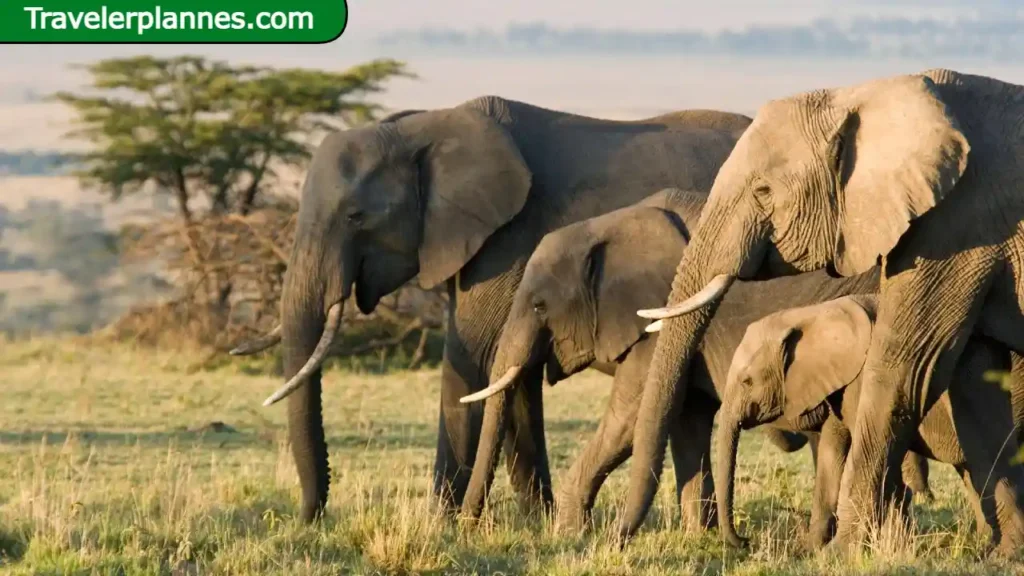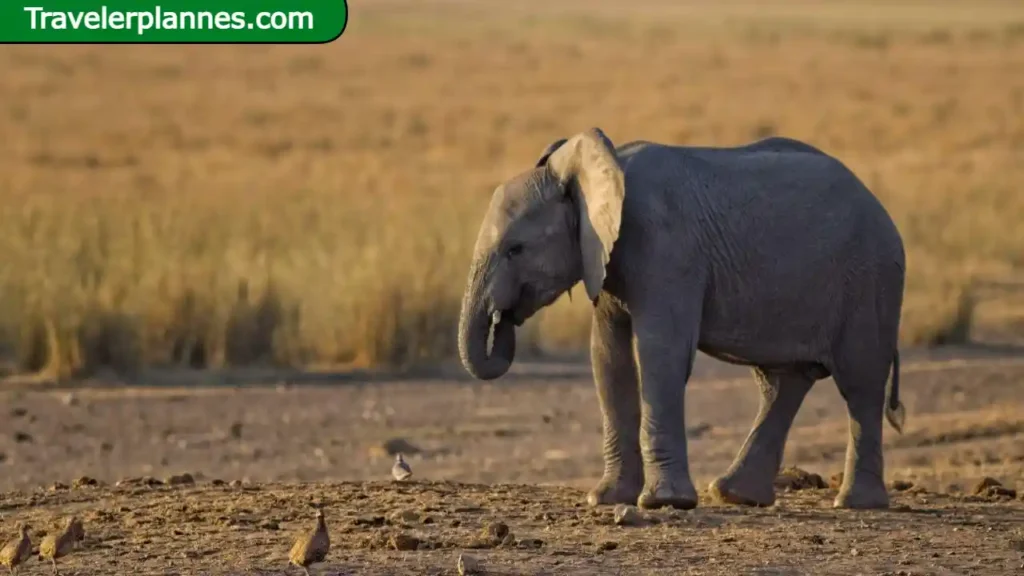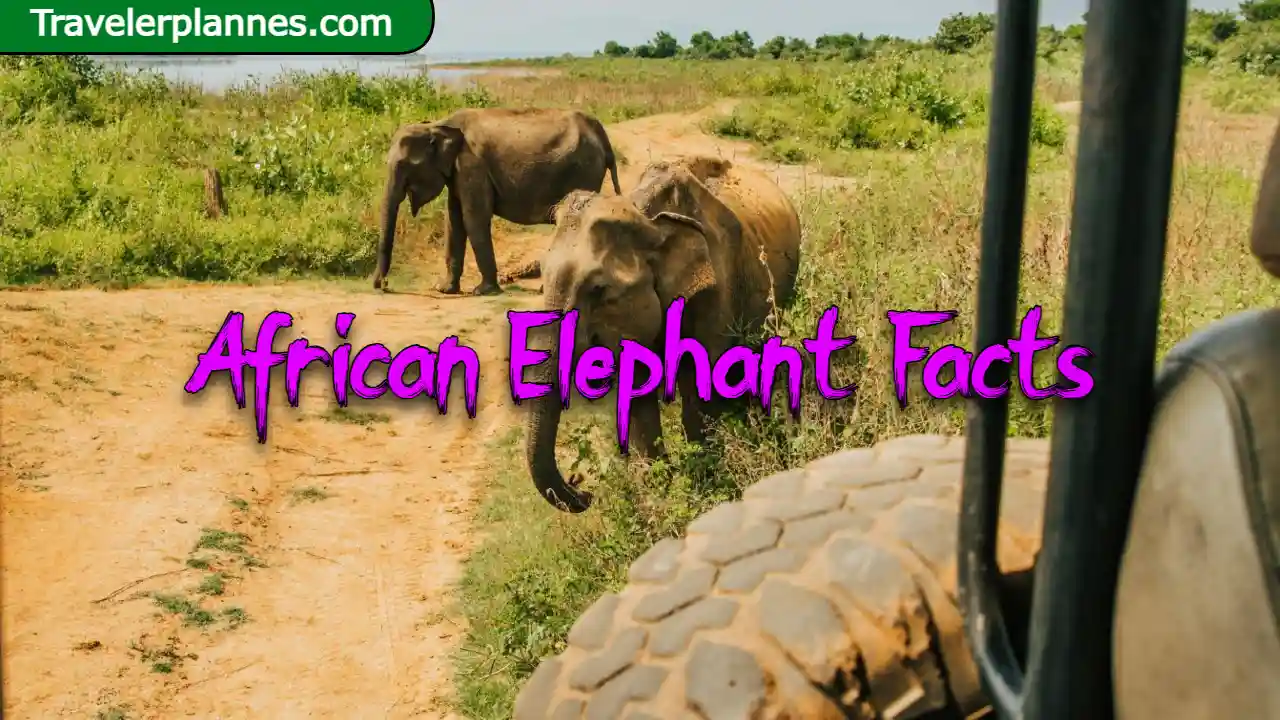Discover the fascinating realm of African elephants, the largest land creatures on our planet. These majestic beings have captivated humans with their immense size, intelligence, and intricate social structures. As integral members of Africa’s environment and society, African elephants play a vital role. Join us on a comprehensive journey as we delve into their habitat, behavior, conservation status, and other intriguing aspects. Brace yourself for an exploration of these gentle giants’ captivating world.
Contents
I. Taxonomy and Classification
1. Genus and Species
African elephants are scientifically known as Loxodonta africana and Loxodonta cyclotis, representing two distinct subspecies.
2. Subspecies
- Loxodonta africana: This subspecies is commonly referred to as the African Savannah Elephant.
- Loxodonta cyclotis: This subspecies is known as the African Forest Elephant, inhabiting the dense forests of Central and West Africa.
II. Physical Characteristics
1. Size and Weight
African elephants are the largest terrestrial animals on Earth, with males weighing up to 14,000 pounds and standing 10-13 feet tall at the shoulder.
2. Trunk
- The elephant’s trunk is a versatile tool used for breathing, smelling, touching, grasping objects, and even as a weapon in self-defense.
3. Tusks
- Elephants have elongated, curved incisors known as tusks that are used for various purposes, including digging for water and stripping bark from trees.
4. Ears
- African elephants have large ears that serve as natural air conditioning, helping to regulate their body temperature in the scorching African heat.
5. Skin
- Their skin is thick and wrinkled, providing protection against sunburn and parasites.
6. Feet
- Elephant feet are large and padded, distributing their massive weight efficiently and allowing them to walk silently.
7. Sexual Dimorphism
- Male elephants are typically larger and heavier than females, with more prominent tusks.
III. Habitat and Range
1. Geographic Distribution
African elephants inhabit a range of countries across the African continent, including but not limited to Kenya, Tanzania, Botswana, and South Africa.
2. Preferred Habitats
- They can be found in a variety of habitats, from the open savannas to dense forests, depending on their subspecies.
3. Migration Patterns
- African elephants exhibit seasonal movements, often covering long distances in search of food and water during dry seasons.
Also Check: Top 10 Wildlife Tours in Australia
IV. Behavior and Social Structure

1. Family Units
- African elephants live in tight-knit family units led by a matriarch, usually the oldest and most experienced female.
2. Communication
- They communicate through a range of vocalizations, body language, and infrasound, which is below the range of human hearing.
3. Intelligence
- These creatures are known for their remarkable cognitive abilities, including problem-solving and long-term memory.
4. Daily Life
- A typical day for an elephant involves feeding, resting, and socializing with their family group.
V. Diet and Feeding Habits
1. Herbivores
- African elephants are strict herbivores, consuming a variety of plant material such as grasses, leaves, bark, and fruits.
2. Foraging Techniques
- They use their trunks and tusks to extract nutrition from different vegetation types.
3. Water Dependence
- Elephants need access to water daily and often dig for water in dry riverbeds during droughts.
VI. Reproduction and Lifecycle

1. Reproductive Cycles
- Female elephants have estrous cycles, typically coming into estrus every 14-16 weeks.
2. Gestation and Birth
- The gestation period for African elephants is approximately 22 months, and they give birth to a single calf.
3. Calf Rearing
- The responsibility of raising and protecting the calf is shared among the females in the family group.
4. Maturity and Aging
- Elephants reach sexual maturity at different ages, with males typically maturing later than females.
VII. Threats and Conservation Status
1. Poaching
- Illegal ivory trade poses a severe threat to African elephants, leading to a decline in populations.
2. Habitat Loss
- Human encroachment, deforestation, and agricultural expansion have reduced elephant habitats.
3. Conservation Efforts
- Numerous organizations and initiatives are dedicated to the conservation of African elephants.
4. IUCN Status
- The International Union for Conservation of Nature (IUCN) classifies African elephants as vulnerable and endangered, depending on their subspecies.
VIII. Human-Elephant Conflict
1. Agricultural Conflicts
- Elephants often come into conflict with farmers when they raid crops for food.
2. Mitigation Strategies
- Various strategies, including elephant corridors and beehive fences, are used to reduce human-elephant conflicts.
IX. Cultural Significance
1. African Traditions
- African elephants have deep cultural significance in folklore, art, and religion across the continent.
2. Tourism and Ecotourism
- They play a crucial role in attracting tourists to African countries, contributing to the economy.
Conclusion
African elephants are not only remarkable physically but also socially and behaviorally. They face threats from poaching and habitat loss. However, with conservation efforts and awareness, we can ensure their survival and preserve their habitats. African elephants are crucial for ecosystem balance and diversity, symbolizing Africa’s wild beauty.









